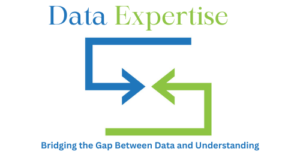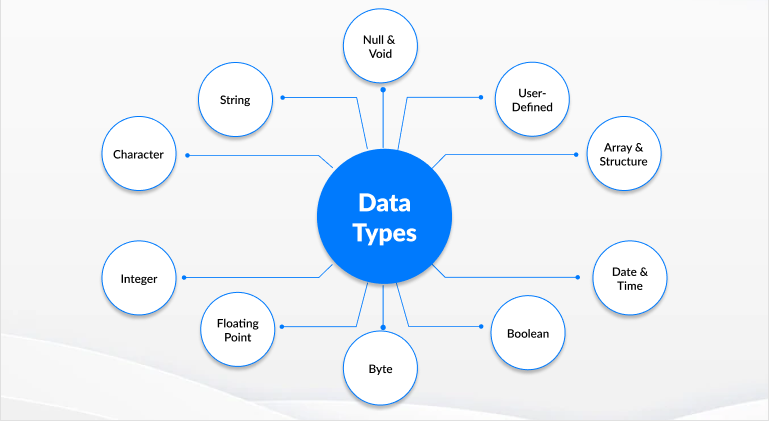Data is the backbone of the digital world, and mastering its classification and representation is the key to unlocking its potential. In this comprehensive guide, we’ll delve into the intricacies of data types and formats, explore their significance, and understand their real-world implications.
Data Types: The Foundation of Data Classification
Data types are the fundamental classification system for data, defining their characteristics and guiding how they should be processed. Here’s what you need to know:
- Data Classification: At its core, data types categorize data into various groups based on their inherent attributes and intended use. They are the labels that help us understand and work with data effectively.
- Common Types: Data comes in a variety of flavors, including integers for whole numbers, strings for text, floats for decimal numbers, and more. Each data type serves a specific purpose in the world of data representation.
- Efficient Storage and Processing: The choice of data type is crucial. Efficient data storage and processing rely on selecting the right data type to accurately represent the data while minimizing resource consumption. For example, if your data consists of whole numbers, using an integer data type is more efficient than a floating-point data type.
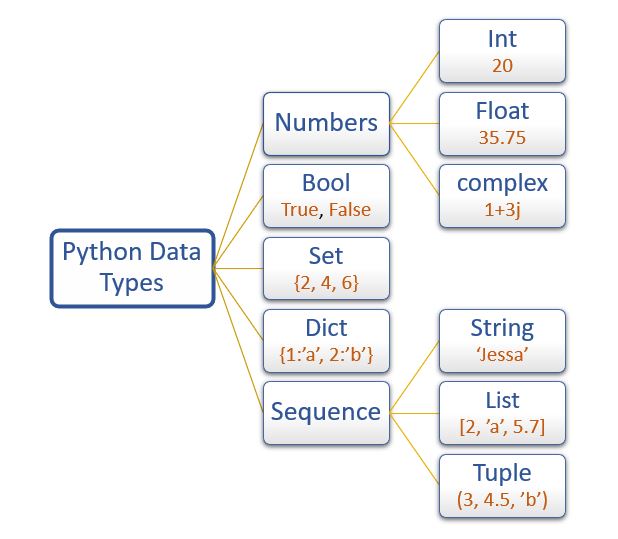
Structured vs. Unstructured Data: Embracing Data Variety
Data is diverse, and it can be broadly categorized as structured or unstructured:
- Structured Data: This form of data is highly organized and typically fits neatly into rows and columns. It’s commonly found in relational databases and is prevalent in business applications where order and organization are essential.
- Unstructured Data: On the other hand, unstructured data lacks a predefined structure. It includes free-form text, multimedia content, and other data types that don’t readily conform to traditional tabular representations.
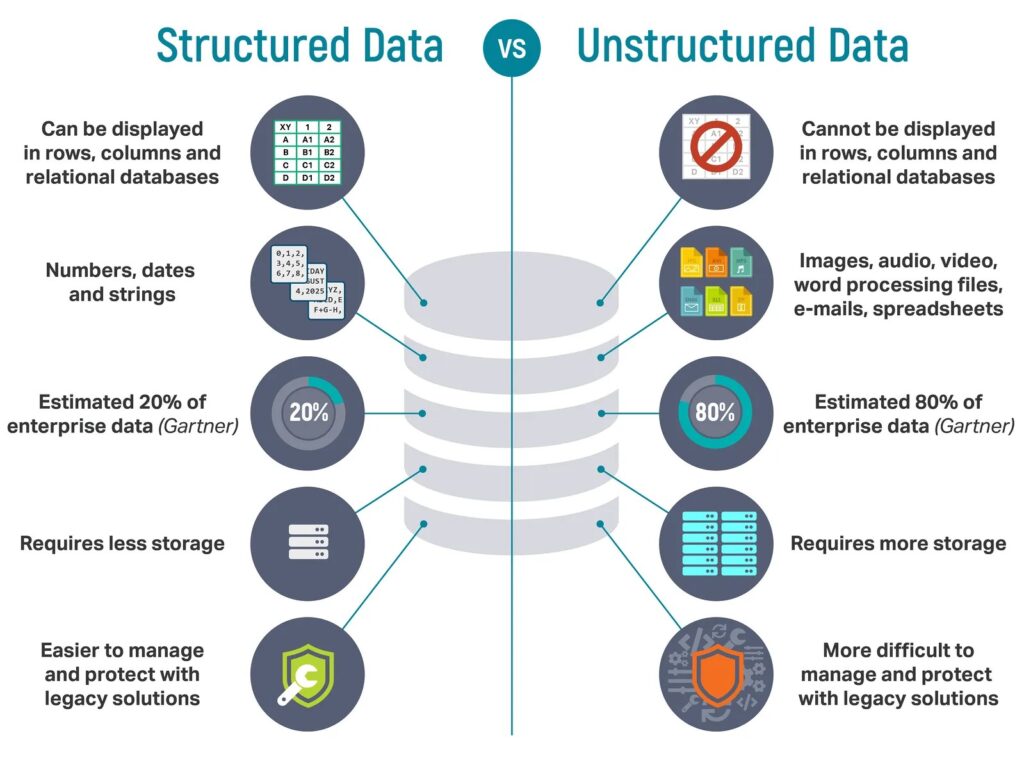
Data Formats: The Language of Data Representation
Data formats define the structure in which data is encoded, stored, and structured. They are the language that data speaks:
- Format Definition: Data formats specify how data is organized, whether it’s in plain text, binary, or a combination of both. The choice of format is critical as it determines how data is structured and exchanged.
- Common Formats: Some of the most widely-used data formats include CSV (Comma-Separated Values), JSON (JavaScript Object Notation), XML (eXtensible Markup Language), and more. These formats are the foundation of data representation and communication in the digital world.
- Impact on Accessibility: The data format choice significantly impacts data accessibility. It defines how data can be read, processed, and utilized. Some formats are human-readable, making them accessible without specialized tools, while others are machine-readable, optimized for data exchange between software systems.
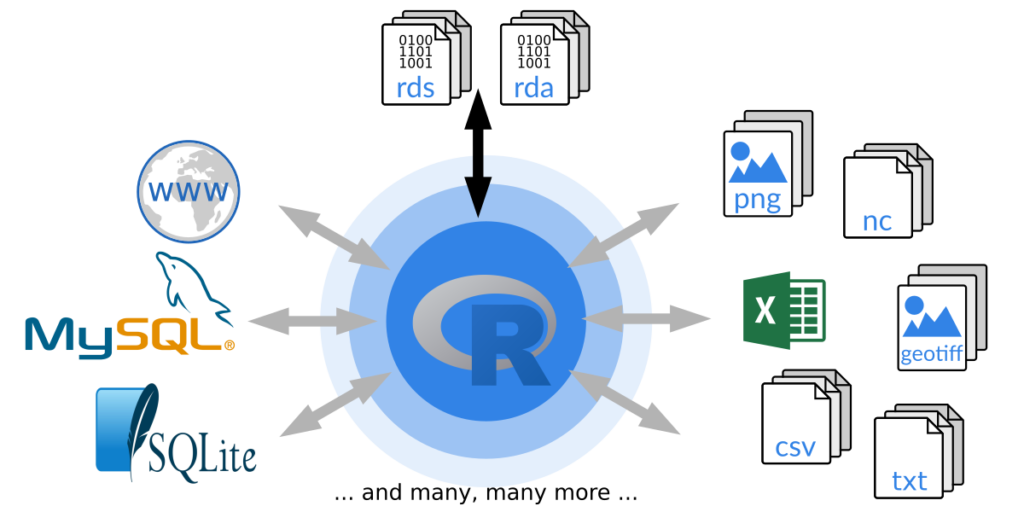
The Vital Connection: Data Types and Formats in Data Analysis
The significance of data types and formats becomes particularly pronounced in the realm of data analysis:
- Influence on Analysis: The selection of data types and formats plays a pivotal role in the data analysis process. A misalignment between the chosen format and the analysis tool can introduce errors and inaccuracies in the results.
- Readability and Compatibility: Using the correct data format ensures that data is readable and compatible with the analysis tools you intend to use. For instance, analyzing time-series data demands a specific format to accurately capture timestamps and other relevant information.
From Theory to Practice: Real-World Examples
To bring these concepts to life, let’s delve into practical examples of data types and formats in action:
- Healthcare Data and HL7: In the healthcare industry, the Health Level Seven International (HL7) format is the go-to choice for exchanging information between healthcare systems. It structures data in a way that ensures consistency and interoperability, a crucial requirement for patient records and health data management.
- Scientific Data in CSV: Scientific experiments generate substantial datasets, often stored in the CSV format. This format’s simplicity and widespread support make it an excellent choice for storing structured scientific data and facilitating analysis and research.
- Web Data and JSON: JSON is a prevalent format for web data. Its human-readable nature and lightweight structure make it ideal for web applications, enabling seamless data exchange between web servers and clients.
Conclusion: Mastering the Data Framework
Data types and formats are the cornerstones of efficient data management. Understanding their nuances empowers you to work with data effectively and make informed choices when structuring and representing information. This comprehensive overview equips you with the knowledge to navigate the diverse landscape of data, unlocking the full potential of data-driven decisions.
Whether you’re embarking on a journey in data science or you’re a seasoned data professional, this knowledge is your tool for success. Immerse yourself in the world of data types and formats, and harness the transformative power of data. Explore further with our external resources or dive deeper into the realm of data in our other data-related guides.
